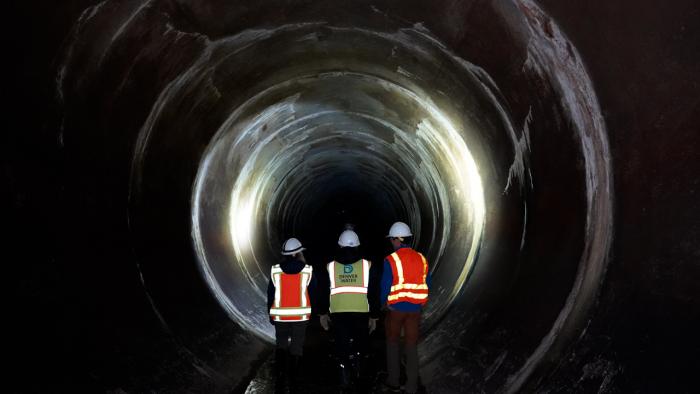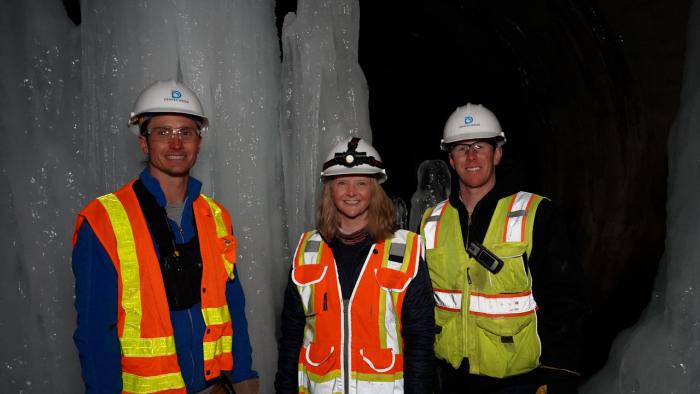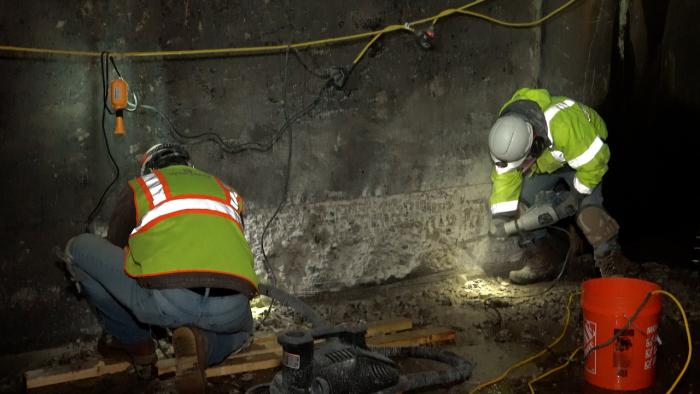Going down under at Denver Water’s Dillon Dam
When it comes to keeping a dam safe, little things matter.
And, just like a car’s engine or your own health, an ounce of prevention is worth a pound of cure.
For Denver Water that means keeping an eye out for minor issues at its dams and tackling them before they turn into larger problems.
That philosophy led to a project in 2020 to repair concrete inside a tunnel inside Dillon Dam, a key piece of Denver Water’s system to collect and store water.
After the 2019 spring runoff in Summit County, Denver Water saw near-record flows through a concrete tunnel that passes water from Dillon Reservoir, through Dillon Dam and out to the Blue River below.
The tunnel is 1,800 feet long, 15 feet in diameter and 231 feet below the top of the dam.
During the 2019 spring runoff, after an above-average snow year, water passed through the tunnel at a rate of 1,906 cubic feet of water per second. The highest flow rate since 1995, when the spring runoff flowed at 1,902 cubic feet per second through the tunnel.
“When water passes through a tunnel, there are a lot of forces on the infrastructure. And in 2019, those forces led to some deterioration in the concrete that required some minor repairs,” said Tyler Johnson, Dillon Dam’s operations supervisor at Denver Water.
Dillon Dam facility operators, the caretakers who live on-site and work at the dam daily, noticed small patches of deterioration while inspecting the tunnel after the runoff.
“Inspecting a tunnel is a very unique experience, it’s dark, wet, cold and icy,” Johnson said. “In this case, we noticed something unusual and contacted our dam safety team.”
Denver Water’s dam safety team found areas in the tunnel that had pitting and scouring — technical terms to describe a type of deterioration of the concrete.
“We take even the smallest issues seriously,” said Ashley Hase, a dam safety engineer at Denver Water. “If we hadn’t caught this deterioration early, it could have turned into a larger problem.”
Denver Water called in a concrete repair crew in 2020 to fix the deteriorating patch.
“The crews removed the damaged concrete with jackhammers and then installed a new patch,” said Eric Swanson, a senior construction inspector at Denver Water.
The work highlights the diligence required to maintain not only the outside of Denver Water’s dams, but also the tunnels, valves and operating parts inside.
Denver Water’s on-site caretakers look for anything out of the ordinary during their day-to-day work in, on and around the utility’s dams.
The utility’s Dam Safety team also performs regular, routine inspections on the utilities’ 20 dams on an annual basis in coordination with the State Engineer’s Office. Each dam’s facility operators participate in the inspections working alongside dam safety, mechanical and corrosion engineers.
Denver Water’s four dams that produce hydropower go through an additional annual inspection from the Federal Energy Regulatory Commission as well as a five-year inspection from an external consultant.
“The Dillon repair work was a small project but an important one,” Swanson said. “We like to stay on top of things to make sure we have infrastructure that will be reliable for the future.”
Editor’s note: This project happened in February 2020, before Denver Water issued mandatory mask requirements for employees due to COVID-19.




